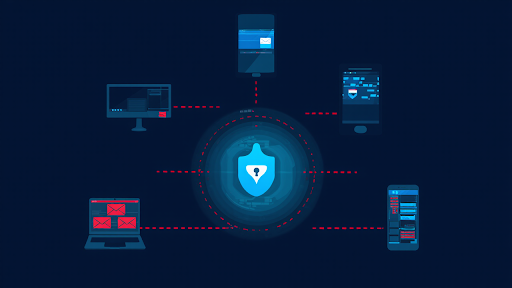Attack Surface Growing Pains

If you’ve ever spent time in a fast-growing U.S. city, you’ve likely experienced the frustration of traffic gridlock. The common response is to build or expand highways. While this may provide temporary relief, it often encourages more development and, ultimately, more cars on the road. Eventually, traffic slows again and the cycle continues. It’s a bit like the story of King Midas: every effort to improve the situation ends up creating new problems.
The Digital Version of Expansion
Today, businesses face a similar challenge but in the digital world. Data is the new “gold,” driving innovation and growth. With countless apps and cloud services, companies can expand faster than ever. But that rapid digital expansion also comes with increased exposure to cyber risks.
Just as transportation departments struggle to manage physical infrastructure, IT and cybersecurity teams often find themselves racing to keep up with the growing complexity of their digital environments. Every new cloud platform, app, or software update adds potential risks, sometimes creating vulnerabilities that weren’t there before.
What Is an Attack Surface?
Your attack surface is all the places where your systems could potentially be vulnerable to cyber threats. It’s the full set of points where attackers might try to gain unauthorized access or steal data.
- A small business might have a simple attack surface which includes just a few devices and cloud accounts.
- A large company with multiple offices, cloud providers, and remote workers has a much broader, more complex attack surface.
The bigger your digital footprint, the more opportunities cybercriminals have to find and exploit weaknesses.
Key Components of Your Attack Surface
Understanding the different parts of your attack surface can help you protect your business more effectively. Here’s what to watch for:
This includes all the devices that connect to your network:
- Laptops and desktops
- Mobile phones
- Printers
- IoT devices (e.g., smart thermostats or cameras)
Even remote devices outside your main office are part of this surface. These are often targeted first through malware or phishing.
Digital Attack Surface
These are the software systems and online services your company uses:
- Operating systems and applications
- Websites and web applications
- APIs used for communication between systems
Hackers often exploit software bugs, outdated patches, or misconfigured settings. Web vulnerabilities can also allow them to steal data or disrupt your services.
Human Attack Surface
People are often the weakest link in cybersecurity:
- Phishing emails
- Social engineering tactics
- Accidental clicks or sharing of credentials
Cybercriminals know how to manipulate employees to gain access to secure systems.
Cloud and Shadow IT
Cloud environments bring added flexibility but also new challenges:
- Misconfigured cloud settings
- Too many users with excessive permissions
- Limited visibility into cloud usage
Shadow IT, when employees use apps or services without IT approval, can create major blind spots in your security.
How to Reduce Your Attack Surface
Attackers don’t need a wide-open door. A single weak password, outdated app, or forgotten open port can give them what they need. Here’s how to fight back:
- Run regular vulnerability scans to detect outdated software, misconfigurations, and open ports.
- Apply patches promptly to fix known security issues.
- Use least privilege access, only giving users the access they absolutely need.
- Turn off unnecessary features on all systems and devices.
- Continuously monitor your systems to spot suspicious activity before it causes damage.
These steps are just the beginning. The real challenge lies in pulling together data from all your tools, making sense of it, and acting quickly. But by staying proactive, businesses can reduce their risk and stay ahead of evolving threats.



